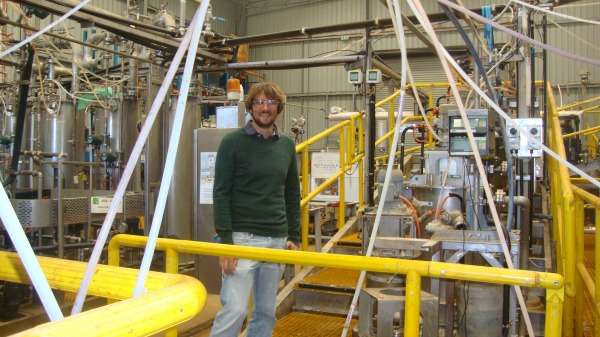NITROGEN EXTRACTION ? Yes... nitrogen extraction is quite remarkable.
It can handle the -
2 - kinds of - Lateritic ores. - sulphide nickel
- silicate nickel
This process was worked on for, Australia nickel found in,
iron laterites and nickel silicates.
EVNI's ORES ? We have
sulphide nickel + silicate nickel. silicate nickel is mentioned in historical records.
Stating - portion of nickel is bound in the - chlortites
Which points to, nickel chloride.
DID YOU KNOW ? Nitrogen can be harvested from - simple air we brerathe ?
This makes it a very - green extraction -
AIR WE BREATH - CONTAINS ? - 78 % nitrogen
- 21 % oxygen
- hence, extraction nitrogen from air, could result in
a very cheap process of creating ones own oxidant.
- hydrogen pairs with minerals
- oxygen pairs with minerals
- nitrogen pairs with minerals
CSIRO - DNI - NICKEL PROCESS Another new method of extracting nickel from laterite ores is currently being demonstrated at a pilot scale test plant at the
CSIRO facility in Perth Australia.
The DNi process uses nitric acid, instead of sulphuric acid, to
extract the nickel within a few hours and then the nitric acid is recycled.
The DNi process has the major advantage of being
able to treat both limonite and saprolite lateritic ores and is estimated to have less than half the capital and operating costs of HPAL or FerroNickel processes.
https://www.csiro.au/en/work-with-us/industries/mining-resources/processing/direct-nickel
CSIRO - DSX - PROCESS -
More nickel can be produced more efficiently from Australia's low-grade laterite ores if the metal is directly extracted after leaching with nitric acid, research suggests.
The extraction step, called direct solvent extraction (DSX), promises to increase the profitability of the innovative nitrate-based
nickel production process pioneered by CSIRO and Direct Nickel at their Perth-based pilot plant.
( Bingo ) added. Curtin University researcher Mr Mike Hutton-Ashkenny says using DSX will allow Direct Nickel to produce a
purified nickel solution, rather than a nickel-rich precipitate.
But we could use a process like DSX to selectively extract the nickel and cobalt…then purify and concentrate that out."
Mr Hutton-Ashkenny says while a commercial solution to DSX is available for conventional sulphuric acid leach solutions the use of nitric acid was unexplored territory.
"Nobody had ever tried DSX from a really concentrated nitrate solution before, nobody really knew what was going to happen," he says.
Trial and error used to find right reagent
Mr Hutton-Ashkenny's lab-based research compared the performance of three reagent (a substance used to bring about a chemical reaction) combinations in extracting nickel and cobalt from Direct Nickel's nitrate-rich leach solution.
"Inside that leach solution is nickel, cobalt, magnesium, manganese and zinc," he says.
"You don't want anything except nickel and cobalt, so you need reagents that are specific to those two, and that don't touch anything else."
While two of Mr Hutton-Ashkenny's three combinations performed well at this extraction step, only one made it through the second part of the challenge: stripping the nickel from the reagents using a commercially proven sulphuric acid wash.
Mr Hutton-Ashkenny found the most promising combination—the commercially available organic acid VersaticTM10 and a pyridine carboxylate—worked with low extraction pH and low neutralisation requirements.
DSX technology could further add to the efficiencies realised by leaching ore with nitric acid instead of sulphuric acid, including lower costs, reagents recycling and reduced environmental impact: the nitrate-rich tailings can even boost plant growth by adding nitrogen to the soil.
"Using nitric acid means we can get more nickel out of the same ore body," Mr Hutton-Ashkenny says.
"Leach the nickel and cobalt out with nitric acid, use DSX to get it into sulphuric acid, and then nickel purification from there is commercially proven."

LINK -
https://phys.org/news/2015-04-reagents-nickel.html
NITRIC EXTRACTION -
- pretty impressive.
- green extraftion
- targets both kinds of nickel
- rejects other minerals
Who could ask for more ?
Faster than bioleaching and i would think....
targeting both kinds of " nickel " could do 2 things....
1 - increase grade of nickel ore body capturing nickel silicates
2 - if portion of sulphide captured is not -100%
the nickel silicate captured by nitrogen could maintain current grade
or increase with bonus nickel silicate.
NICKEL NITRATE - ELECTRTOLYSIS ? Yes....
FROM THE WEB - Electrolysis of nickel(II) nitrate
Electrolysis of a nickel(II) nitrate solution produces oxygen at the anode, and hydrogen and nickel at the cathode. Few interesting facts on, nitrate.
I would think manufacturing one's own nitrogen from - air.
And... with the ( wishful ) thought of, using river for - power source
would create a powerful -
green mine model. = untouchable.
But... will our junior do so ?
I feel dismissing the silicate nickel and relying only on
sulphide nickel wil lresult in, lesser capture of nickel...
Bioleaching uses sulphur iron eating bacteria.
While...
nitrogen is so simple... faster process - few hours And targets both kinds of nickel.
I'd say we have - lateritic ores....
Keep in mind - online it states there are two kinds of
laterite nickel ores - sulphide + silicate.
And... they mention Australia as having such ore bodies.
Perhaps evni should reclassify their - ore body to
laterites - instead of - trying to explain - komatite ?
lol
Cheers....